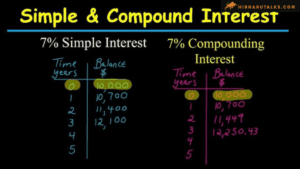
Weekly Market Analysis: Breaking Down the Trends
Contents
- 1 weekly market analysis
- 1.1 Weekly Market Analysis: Breaking Down the Trends
- 1.1.1 Key Market Trends of the Week
- 1.1.2 Insights for Investors
- 1.1.3 Conclusion:
- 1.1.4 FAQs:
- 1.1.4.1 1.What were the major movements in the stock market this week?
- 1.1.4.2 2.Which sectors showed the most significant changes?
- 1.1.4.3 3.How did recent economic indicators affect the market?
- 1.1.4.4 4.What should investors focus on during market volatility?
- 1.1.4.5 5.How can sector-specific shifts impact investment decisions?
- 1.1.4.6 6.What is the significance of the Consumer Confidence Index?
- 1.1.4.7 7.How do fluctuations in oil prices impact the market?
- 1.1.4.8 8.What role do interest rate expectations play in market movements?
- 1.1.4.9 9.Why is diversification important during uncertain market conditions?
- 1.1.4.10 10.What upcoming events should investors watch for?
- 1.2 weekly market analysis
- 1.3 Polymatech Electronics Expands Global Footprint with $16 Million Semiconductor Facility in Bahrain
- 1.1 Weekly Market Analysis: Breaking Down the Trends
weekly market analysis
Weekly Market Analysis: Breaking Down the Trends
Understanding market trends is crucial for investors looking to make informed decisions. In this weekly market analysis, we’ll break down the key trends and movements observed in the financial markets over the past week. From stock performance to sector-specific shifts, we’ll provide a clear overview of what’s happening in the market and what it means for your investment strategy.


Key Market Trends of the Week
1. Stock Market Movements: A Week in Review
This week, the stock market has shown notable fluctuations. Key indices like the S&P 500, Nasdaq, and Dow Jones have experienced varying degrees of volatility. The S&P 500 saw a 1.5% increase, driven by gains in the technology and healthcare sectors. In contrast, the Nasdaq, heavily weighted with tech stocks, surged 2.2%, while the Dow Jones remained relatively flat, reflecting broader economic concerns.
- Technology Sector: Tech stocks led the rally with companies like Apple and Microsoft reporting better-than-expected earnings. Innovations in AI and increased consumer demand for tech products have fueled investor optimism.
- Healthcare Sector: The healthcare sector also saw positive movements due to advances in biotechnology and strong performance from pharmaceutical companies. This trend highlights the ongoing interest in healthcare innovations and their impact on stock performance.

2. Sector-Specific Shifts: What’s Hot and What’s Not
- Energy Sector: The energy sector experienced a downturn this week, primarily due to fluctuating oil prices and geopolitical tensions affecting supply chains. Oil prices dropped by 3%, reflecting concerns about oversupply and weak demand.
- Financial Sector: Financial stocks showed mixed results. Banks reported stable earnings, but concerns about interest rate hikes led to caution among investors. The Federal Reserve’s stance on future monetary policy will likely influence financial sector performance in the coming weeks.
3. Economic Indicators and Their Impact
Several key economic indicators were released this week, impacting market sentiment:
- Unemployment Data: The latest unemployment figures showed a slight increase in jobless claims, indicating potential softness in the labor market. This has implications for consumer spending and economic growth.
- Inflation Rates: Inflation rates remained steady, easing some concerns about rapidly rising costs. However, investors are closely monitoring inflation trends as they impact purchasing power and interest rates.
- Consumer Confidence Index: The Consumer Confidence Index improved slightly, suggesting that consumers remain optimistic about economic conditions. This positive sentiment could support consumer-driven sectors.


Insights for Investors
- Diversification: Given the current market volatility, diversification remains a key strategy. Investors should consider spreading their investments across different sectors and asset classes to mitigate risks.
- Sector Analysis: Focus on sectors showing resilience and growth potential. Technology and healthcare, for example, have demonstrated strong performance and could offer opportunities for growth.
- Monitor Economic Indicators: Stay informed about economic indicators such as employment data and inflation rates. These metrics provide insights into the broader economic environment and can guide investment decisions.


Conclusion:
This week’s market analysis highlights a period of mixed movements with significant trends in various sectors. Understanding these trends and their underlying factors is essential for making strategic investment decisions. By keeping an eye on key indicators and sector performances, investors can better navigate the market and capitalize on opportunities.
Stay tuned for next week’s analysis, where we’ll continue to break down market trends and provide actionable insights to help you stay ahead in your investment journey.
FAQs:
1.What were the major movements in the stock market this week?
A. The S&P 500 increased by 1.5%, Nasdaq surged 2.2%, while the Dow Jones remained flat.
2.Which sectors showed the most significant changes?
A. The technology and healthcare sectors showed positive movements, while the energy sector experienced a downturn.
3.How did recent economic indicators affect the market?
A. Unemployment data indicated potential labor market softness, inflation rates remained steady, and consumer confidence improved slightly.
4.What should investors focus on during market volatility?
A. Investors should focus on diversification, sector analysis, and monitoring economic indicators.
5.How can sector-specific shifts impact investment decisions?
A. Sector-specific shifts can reveal growth opportunities or risks, guiding investors to adjust their portfolios accordingly.
6.What is the significance of the Consumer Confidence Index?
A. The Consumer Confidence Index reflects consumer sentiment about the economy, which can influence spending and investment patterns.
7.How do fluctuations in oil prices impact the market?
A.Fluctuations in oil prices can affect the energy sector and broader economic conditions, influencing market performance.
8.What role do interest rate expectations play in market movements?
A. Expectations of interest rate hikes can lead to caution in the financial sector and impact overall market sentiment.
9.Why is diversification important during uncertain market conditions?
A. Diversification helps spread risk across different sectors and asset classes, reducing the impact of market volatility on overall portfolio performance.
10.What upcoming events should investors watch for?
A. Investors should monitor upcoming economic reports, Federal Reserve meetings, and earnings announcements for potential market-moving information.
weekly market analysis
Polymatech Electronics Expands Global Footprint with $16 Million Semiconductor Facility in Bahrain





















1 comment